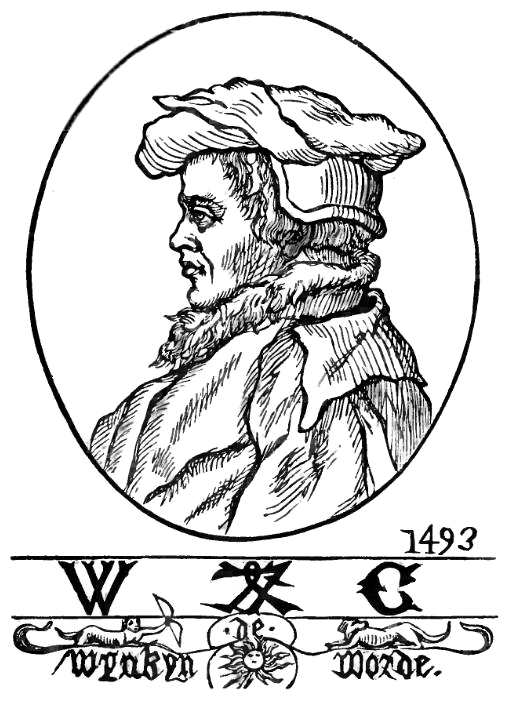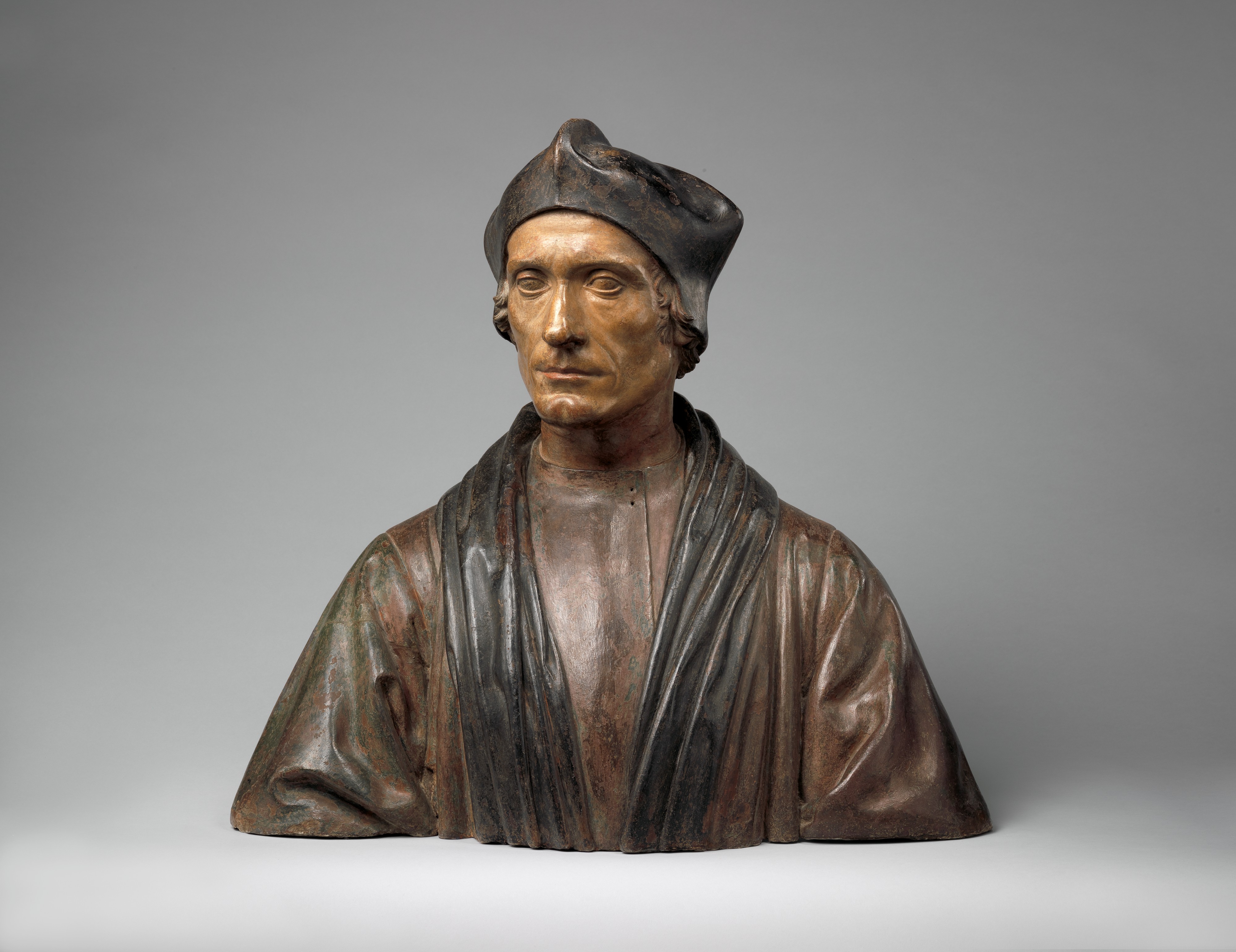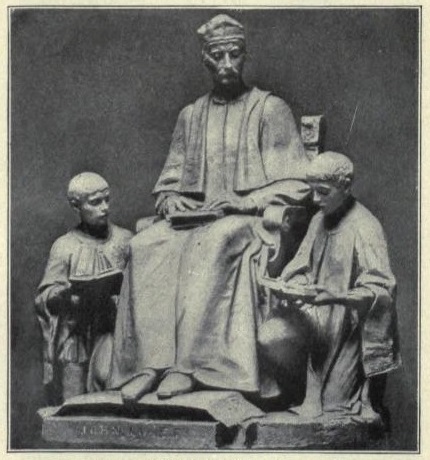|
William Melton (clergyman)
William Melton (died 1528) was an English priest who held the position of chancellor of York Minster. Life Melton was born in Yorkshire, and was educated at Cambridge, where he graduated M.A. 1479, B.D. 1490, and D.D. 1496. From 1485 to 1495 he was a Fellow of Michaelhouse, Cambridge. On 13 January 1496 Melton became chancellor of the church of York. He died at the end of 1528, and his will is dated 28 August of that year, from Acklam, Yorkshire. He is supposed to have been buried either there or in York minster. He was famed as a philosopher, divine, and preacher. Melton was author of a ''Sermo Exhortatorius'', published by Wynkyn de Worde in 1494. Influence At Cambridge Melton was the tutor of his fellow Yorkshireman John Fisher. He was a significant figure in the Cambridge reforming humanist group, including also John Colet, Ralph Collingwood and John Constable John Constable (; 11 June 1776 – 31 March 1837) was an English landscape painter in the Romanticism, Roma ... [...More Info...] [...Related Items...] OR: [Wikipedia] [Google] [Baidu] |
York Minster
The Cathedral and Metropolitical Church of Saint Peter in York, commonly known as York Minster, is the cathedral of York, North Yorkshire, England, and is one of the largest of its kind in Northern Europe. The minster is the seat of the Archbishop of York, the third-highest office of the Church of England (after the monarch as Supreme Governor and the Archbishop of Canterbury), and is the mother church for the Diocese of York and the Province of York. It is run by a dean and chapter, under the Dean of York. The title " minster" is attributed to churches established in the Anglo-Saxon period as missionary teaching churches, and serves now as an honorific title; the word ''Metropolitical'' in the formal name refers to the Archbishop of York's role as the Metropolitan bishop of the Province of York. Services in the minster are sometimes regarded as on the High Church or Anglo-Catholic end of the Anglican continuum. The minster was completed in 1472 after several centuries of buildi ... [...More Info...] [...Related Items...] OR: [Wikipedia] [Google] [Baidu] |
Yorkshire
Yorkshire ( ; abbreviated Yorks), formally known as the County of York, is a Historic counties of England, historic county in northern England and by far the largest in the United Kingdom. Because of its large area in comparison with other English counties, functions have been undertaken over time by its subdivisions, which have also been subject to History of local government in Yorkshire, periodic reform. Throughout these changes, Yorkshire has continued to be recognised as a geographic territory and cultural region. The name is familiar and well understood across the United Kingdom and is in common use in the media and the Yorkshire Regiment, military, and also features in the titles of current areas of civil administration such as North Yorkshire, South Yorkshire, West Yorkshire and the East Riding of Yorkshire. Within the borders of the historic county of Yorkshire are large stretches of countryside, including the Yorkshire Dales, North York Moors and Peak District nationa ... [...More Info...] [...Related Items...] OR: [Wikipedia] [Google] [Baidu] |
University Of Cambridge
, mottoeng = Literal: From here, light and sacred draughts. Non literal: From this place, we gain enlightenment and precious knowledge. , established = , other_name = The Chancellor, Masters and Scholars of the University of Cambridge , type = Public research university , endowment = £7.121 billion (including colleges) , budget = £2.308 billion (excluding colleges) , chancellor = The Lord Sainsbury of Turville , vice_chancellor = Anthony Freeling , students = 24,450 (2020) , undergrad = 12,850 (2020) , postgrad = 11,600 (2020) , city = Cambridge , country = England , campus_type = , sporting_affiliations = The Sporting Blue , colours = Cambridge Blue , website = , logo = University of Cambridge logo ... [...More Info...] [...Related Items...] OR: [Wikipedia] [Google] [Baidu] |
Michaelhouse, Cambridge
Michaelhouse is a former college of the University of Cambridge, that existed between 1323 and 1546, when it was merged with King's Hall to form Trinity College. Michaelhouse was the second residential college to be founded, after Peterhouse (1284). Though King's Hall was established earlier in 1317, it did not acquire actual premises until its re-foundation by Edward III in 1336. The name Michaelhouse is now used for St Michael's Church. Foundation and early history Established formally on Michaelmas Day 1324 as a college for scholars in Holy Orders, Michaelhouse is named after the parish church of the same name located on Cambridge's ''magna strata'' or High Street (today's Trinity Street). Founded by Hervey de Stanton, Edward II's Chancellor of the Exchequer and Lord Chief Justice (Chief Justice of the Pleas) of England, the college was established between spring 1323 and autumn 1324. On 28 May 1323, de Stanton obtained from Dera de Madingley the advowson (or right of prese ... [...More Info...] [...Related Items...] OR: [Wikipedia] [Google] [Baidu] |
Wynkyn De Worde
Wynkyn de Worde (died 1534) was a printer and publisher in London known for his work with William Caxton, and is recognised as the first to popularise the products of the printing press in England. Name Wynkyn de Worde was a German immigrant to England. His name is given in the forms ''Wynkyn de Worde'', ''Wynken de Worde'', ''Wynkyn de Word'', ''Wijnkijn de Worde'', and ''Winandus van Worden'' ("Wynkyn" is a diminutive of "Wynand"). It is also given 15 times in the sacrist's roll of Westminster Abbey and in city records as variants of "John Wynkyn", including ''John Wynkyn'', ''Johannes Wynkyn'', ''Jan Wynkyn'', and ''Jan van Wynkyn''. He is also recorded as ''Willelmo Wynkyn'' ("William Wynkyn") once and as ''Mr. Wylkyns'' eight times. His son Richard is recorded as ''Richard Wynkyn'' and ''Rycharde de Worde''. Some authors have therefore concluded that his real name was John Wynkyn (or Wynand) and that "de Worde" was "merely a place name," while others have concluded tha ... [...More Info...] [...Related Items...] OR: [Wikipedia] [Google] [Baidu] |
John Fisher
John Fisher (c. 19 October 1469 – 22 June 1535) was an English Catholic bishop, cardinal, and theologian. Fisher was also an academic and Chancellor of the University of Cambridge. He was canonized by Pope Pius XI. Fisher was executed by order of Henry VIII during the English Reformation for refusing to accept him as the supreme head of the Church of England and for upholding the Catholic Church's doctrine of papal supremacy. He was named a cardinal shortly before his death. He is honoured as a martyr and saint by the Catholic Church. He shares his feast day with Thomas More on 22 June in the Catholic calendar of saints and on 6 July in that of the Church of England. Early life John Fisher was born in Beverley, Yorkshire, in 1469, the eldest son of Robert Fisher, a modestly prosperous merchant of Beverley, and Agnes, his wife. He was one of four children. His father died when John was eight. His mother remarried and had five more children by her second husband, William ... [...More Info...] [...Related Items...] OR: [Wikipedia] [Google] [Baidu] |
John Colet
John Colet (January 1467 – 16 September 1519) was an English Catholic priest and educational pioneer. John Colet was an English scholar, Renaissance humanist, theologian, member of the Worshipful Company of Mercers, and Dean of St Paul's Cathedral, London. Colet wanted people to see the scripture as their guide through life. Furthermore, he wanted to restore theology and rejuvenate Christianity. Colet is an important early leader of Christian humanism as he linked humanism and reform. John Colet was a friend of Erasmus, a key figure in Christian humanism. Childhood and education The eldest son of Sir Henry Colet (Lord Mayor of London 1486 and 1495), he was born in London in January 1467, and was educated at St Anthony's school and at Magdalen College, Oxford, where he took his M.A. in 1490. He was already nonresident rector of Dennington, Suffolk, and vicar of St Dunstan's, Stepney, and now became rector of Thurning, Hunts. In 1493 he went to Paris and then to Italy, studying ... [...More Info...] [...Related Items...] OR: [Wikipedia] [Google] [Baidu] |
John Constable (priest)
John Constable, was a priest in England during the late 15th and early 16th centuries. Constable was born in Flamborough and educated at the University of Cambridge. He became Rector of Lockington ifrom 1485 to 1512; Archdeacon of Huntingdon from 1512 to 1514; and Dean of Lincoln Lincoln most commonly refers to: * Abraham Lincoln (1809–1865), the sixteenth president of the United States * Lincoln, England, cathedral city and county town of Lincolnshire, England * Lincoln, Nebraska, the capital of Nebraska, U.S. * Lincoln ... from 1514 until his death in 1528. Notes Alumni of the University of Cambridge People from the East Riding of Yorkshire (before 1974) Deans of Lincoln Archdeacons of Huntingdon {{Canterbury-archdeacon-stub ... [...More Info...] [...Related Items...] OR: [Wikipedia] [Google] [Baidu] |
1528 Deaths
Fifteen or 15 may refer to: *15 (number), the natural number following 14 and preceding 16 *one of the years 15 BC, AD 15, 1915, 2015 Music *Fifteen (band), a punk rock band Albums * ''15'' (Buckcherry album), 2005 * ''15'' (Ani Lorak album), 2007 * ''15'' (Phatfish album), 2008 * ''15'' (mixtape), a 2018 mixtape by Bhad Bhabie * ''Fifteen'' (Green River Ordinance album), 2016 * ''Fifteen'' (The Wailin' Jennys album), 2017 * ''Fifteen'', a 2012 album by Colin James Songs * "Fifteen" (song), a 2008 song by Taylor Swift *"Fifteen", a song by Harry Belafonte from the album '' Love Is a Gentle Thing'' *"15", a song by Rilo Kiley from the album ''Under the Blacklight'' *"15", a song by Marilyn Manson from the album ''The High End of Low'' *"The 15th", a 1979 song by Wire Other uses *Fifteen, Ohio, a community in the United States * ''15'' (film), a 2003 Singaporean film * ''Fifteen'' (TV series), international release name of ''Hillside'', a Canadian-American teen drama *Fi ... [...More Info...] [...Related Items...] OR: [Wikipedia] [Google] [Baidu] |
15th-century English Roman Catholic Priests
The 15th century was the century which spans the Julian dates from 1 January 1401 ( MCDI) to 31 December 1500 ( MD). In Europe, the 15th century includes parts of the Late Middle Ages, the Early Renaissance, and the early modern period. Many technological, social and cultural developments of the 15th century can in retrospect be seen as heralding the "European miracle" of the following centuries. The architectural perspective, and the modern fields which are known today as banking and accounting were founded in Italy. The Hundred Years' War ended with a decisive French victory over the English in the Battle of Castillon. Financial troubles in England following the conflict resulted in the Wars of the Roses, a series of dynastic wars for the throne of England. The conflicts ended with the defeat of Richard III by Henry VII at the Battle of Bosworth Field, establishing the Tudor dynasty in the later part of the century. Constantinople, known as the capital of the wor ... [...More Info...] [...Related Items...] OR: [Wikipedia] [Google] [Baidu] |
16th-century English Roman Catholic Priests
The 16th century begins with the Julian year 1501 ( MDI) and ends with either the Julian or the Gregorian year 1600 ( MDC) (depending on the reckoning used; the Gregorian calendar introduced a lapse of 10 days in October 1582). The 16th century is regarded by historians as the century which saw the rise of Western civilization and the Islamic gunpowder empires. The Renaissance in Italy and Europe saw the emergence of important artists, authors and scientists, and led to the foundation of important subjects which include accounting and political science. Copernicus proposed the heliocentric universe, which was met with strong resistance, and Tycho Brahe refuted the theory of celestial spheres through observational measurement of the 1572 appearance of a Milky Way supernova. These events directly challenged the long-held notion of an immutable universe supported by Ptolemy and Aristotle, and led to major revolutions in astronomy and science. Galileo Galilei became a champion ... [...More Info...] [...Related Items...] OR: [Wikipedia] [Google] [Baidu] |








